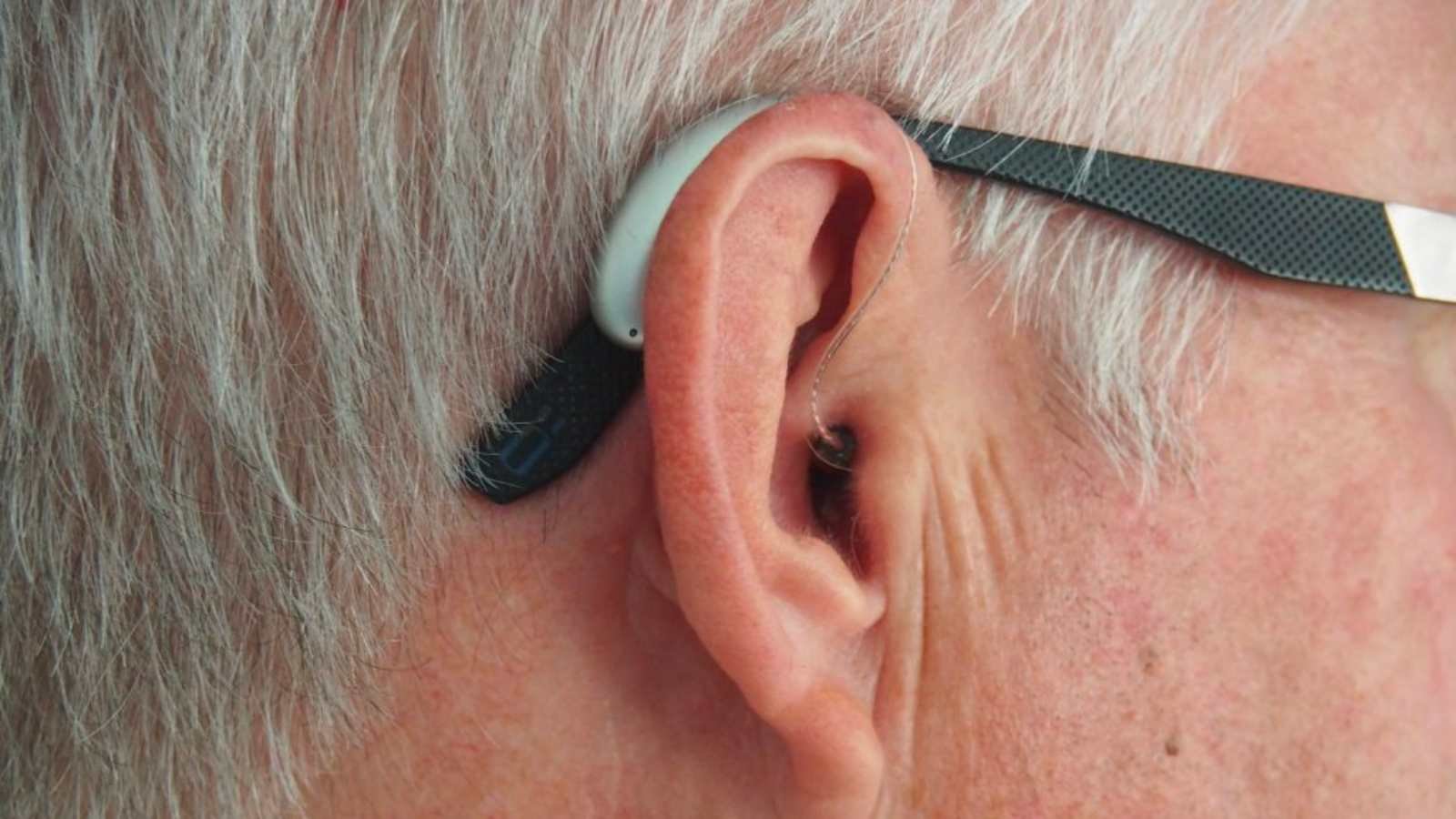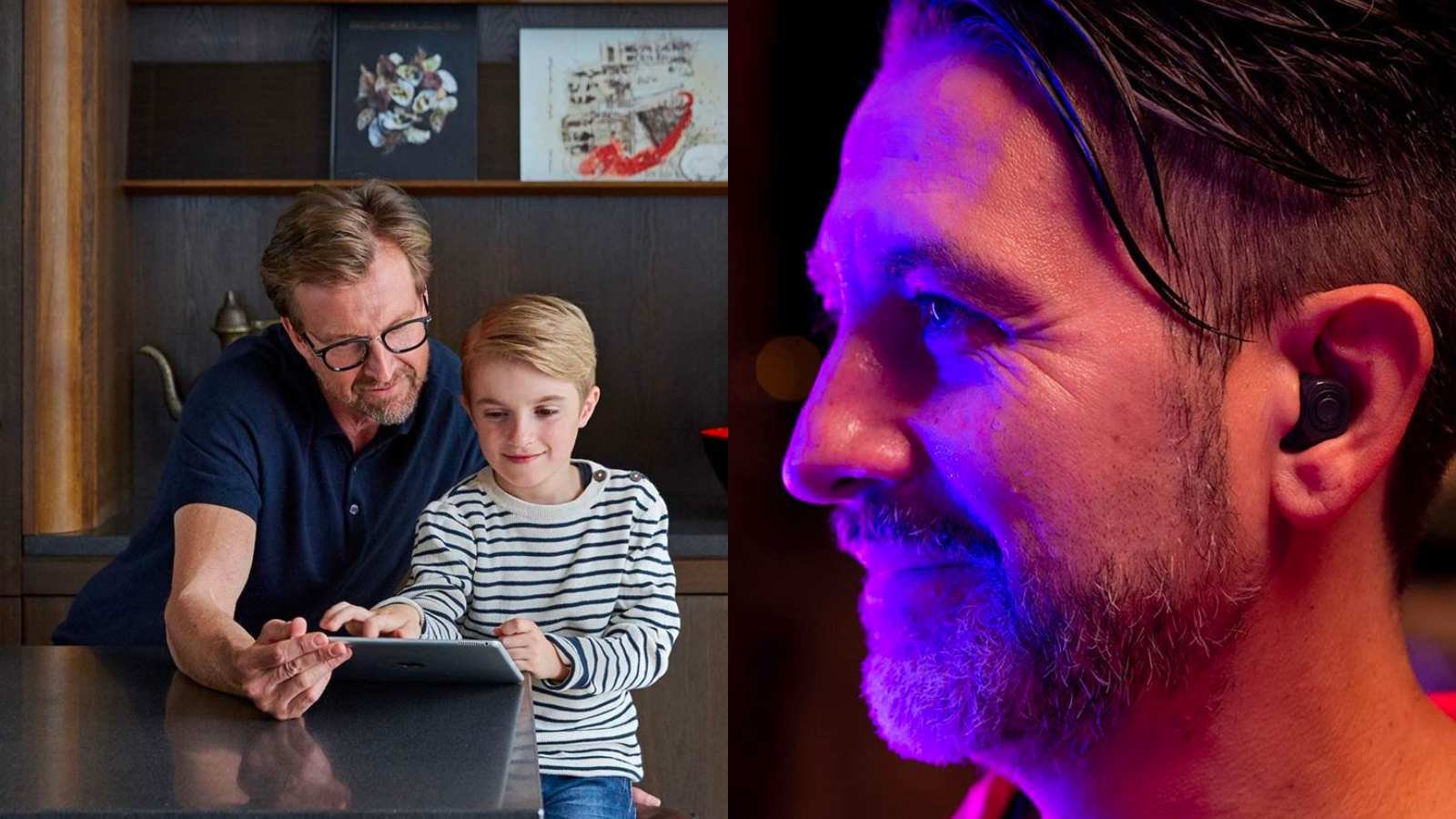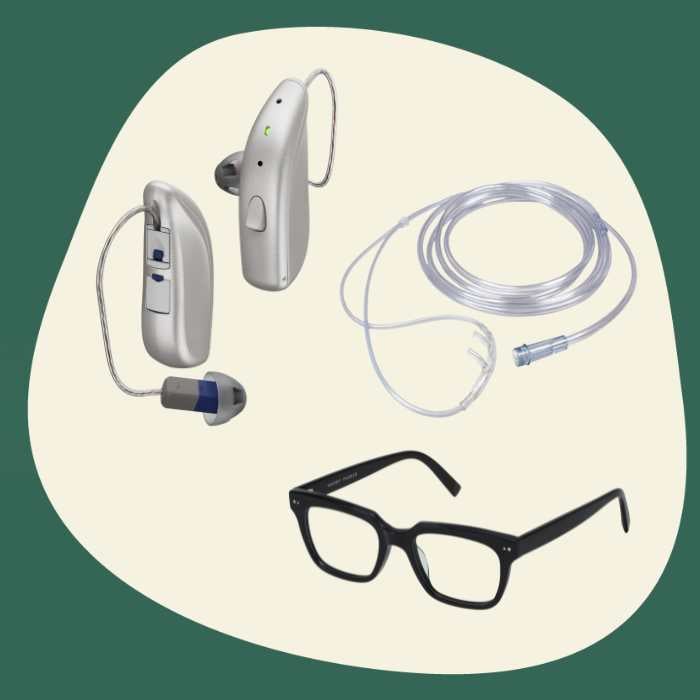Key Takeaways:
- Many hearing aid wearers also wear glasses, and it can take some tweaks to make wearing both a comfortable experience.
- If you have particularly petite ears, you may opt for an in-ear style hearing aid instead of one worn behind the ear.
- If retention becomes a concern, there are custom fitted options that can help with retention (i.e., a custom earmold or sport lock).

As an audiologist, I've had the privilege of working with a diverse group of patients – each with their own unique needs and challenges. This includes those who wear glasses, use supplemental oxygen, or both, in addition to hearing aids. Hearing aids can be great tools to help improve your hearing and quality of life, but they can also compete for valuable real estate behind your ears. As challenging as it may sound initially, there are strategies and tips that make it doable. If you wear oxygen tubes or glasses, this guide is for you.
Let's take a closer look at how glasses and oxygen work with hearing aids and what can be done to make them more comfortable.
Glasses, hearing aids, and oxygen compete for the same space behind the ears.
The Vision Council estimates that about 75% of adult Americans use vision correction of some kind. Most choose eyeglasses for their vision correction option, with a smaller percentage choosing contact lenses.
In the United States, there are approximately 1.5 million Americans who make use of supplemental oxygen.
Now add hearing aids to the mix, and you've got a lot of hardware in one place.
The Good News: Behind-the-ear styles of hearing aids work for most people who also wear oxygen and glasses.
.jpeg)
The real estate behind the ear and in front of the mastoid bone is crucial if you wear glasses or oxygen.
Does your ear stick out from the side of your head? Or does it rest more closely against the head? With more open space behind the ear, it will be easier to manage with a BTE or RIC hearing aid, glasses, or cannula.
The good news is that most people, even those with glasses or oxygen, can adjust to hearing aids and find that they benefit speech understanding and communication.
If you're wearing glasses or a cannula in addition to your hearing aids, it will take some time to feel comfortable inserting the hearing aids and adjusting how they sound. The most important part here is to be patient with yourself.
Tip: Put your behind-the-ear hearing aids on first and then put on your glasses or oxygen. Reverse the order when taking everything off at the end of the day.

What if your hearing aids, glasses, and oxygen don't fit?
If behind-the-ear hearing aids do not fit or if you're especially sensitive to pressure on your ear area, wearing a behind-the-ear unit with glasses or oxygen may not be comfortable enough for daily use. However, if you're due for a new pair of glasses, you might select a thinner frame to help acommodate your accessories.
In this case, custom in-the-ear hearing aids will offer the most comfortable fit. Most in-the-ear devices are custom-molded for your ears, providing a snug fit that will not compete with glasses behind the ear.

The tradeoff is that custom hearing aids can create a plugged-up sound quality for those with normal low-frequency hearing.
Read more about hearing aid styles here.
Hearing Aid Loss Prevention
Even with a properly fitting device, it's still possible for your hearing aid to become dislodged while wearing glasses or oxygen tubes — particularly when engaging in physical activities like exercise or cleaning around the house. Several options can help with retention and prevent hearing aid loss.
- A customized earmold with a canal lock or sport lock if you wear a RIC hearing aid.
- Many companies offer clips and straps that attach directly to your device and clip onto your shirt or a piece of your glasses frames for added security.
Reducing the Oxygen Noise From Your Hearing Aid
Adjusting to the physical fit of the hearing aids is one thing, but oxygen wearers also need to adjust to the sound of oxygen flowing.
It will take some adjusting, especially during the first few weeks of wearing hearing aids. Your hearing care professional can make additional adjustments to make the sound less obvious. However, you can expect that some degree of that sound will always be noticeable and not completely disappear.
Final Thoughts
For most people, wearing hearing aids with oxygen or glasses is not an issue, thanks to today's slim designs; however, if you find yourself uncomfortable even after adjusting the fit, consider investing in a custom device for better results overall.
Additionally, clips and straps can help keep your hearing aid secure no matter what activity you're doing – from everyday tasks like grocery shopping to more strenuous activities such as playing sports or exercising at the gym.
Finding ways to use these accessories together safely will ensure that nothing stands between you and better hearing health.






